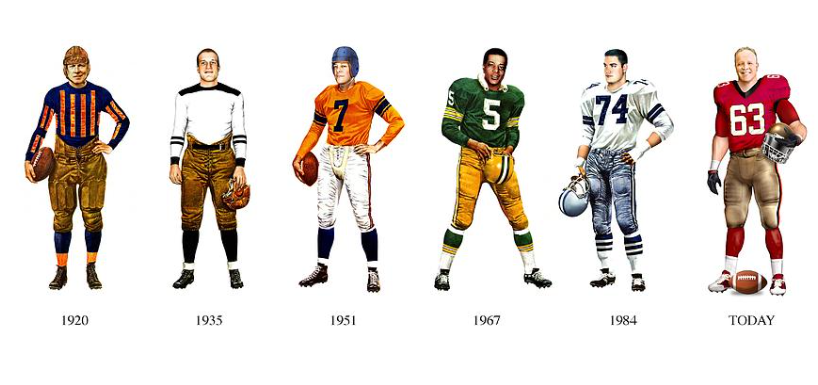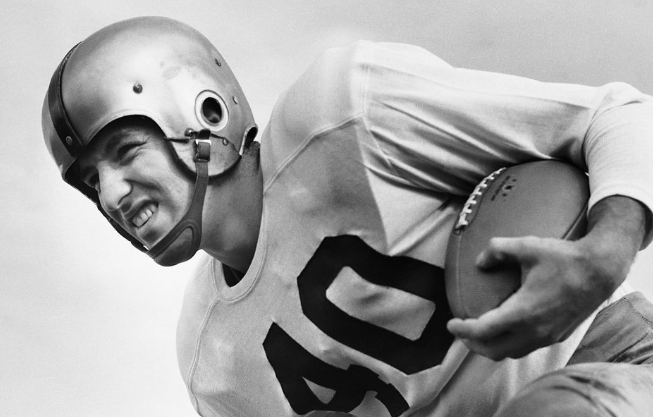In the world of American football, jerseys serve more than just a means of player identification. They have evolved into crucial components of performance, providing players with comfort, flexibility, and support during the intense physical demands of the game.

Early Jerseys
The earliest jerseys in American football were simple garments, often made of wool or cotton, and primarily served to identify players to teammates, opponents, and spectators. These jerseys were often unnumbered and lacked any significant design elements.
Early football jerseys were made of wool, a natural fiber known for its warmth and durability. However, wool’s tendency to absorb moisture and become heavy made it less than ideal for the physical demands of the game.
In the mid-20th century, synthetic fabrics, such as nylon and polyester, emerged as a game-changer. These materials offered superior moisture-wicking properties, keeping players cool and dry, and were lighter and more durable than wool.
Design Evolution
The design of football jerseys has undergone a remarkable transformation over time. Early jerseys were characterized by simplicity, often featuring just the player’s number and team name.
As the sport evolved, jerseys became a canvas for creativity and expression. Bold colors, intricate patterns, and team logos became prominent features, reflecting the growing popularity of team branding and fan engagement.
Performance Enhancement
Modern football jerseys are marvels of fabric technology, designed to enhance player performance and comfort. Advanced fabrics incorporate moisture-wicking properties. Breathability, and stretch, allowing players to move freely and maintain optimal body temperature throughout the game.
Some jerseys even incorporate compression technology, designed to support muscles and reduce fatigue, providing a competitive edge on the field.
A Symbol of Identity
Beyond their functional aspects. Jerseys hold a deeper significance, serving as a symbol of identity and unity for both players and fans. For players, jerseys represent their dedication to their team and the pride they feel in representing their teammates and supporters.
For fans, jerseys are a badge of allegiance, a means of expressing their passion for their team and connecting with fellow fans. Jerseys become cherished possessions, often passed down through generations, preserving the legacy of the team and the memories associated with it.
Conclusion
Football jerseys have transcended their initial purpose as mere identifiers, evolving into symbols of teamwork, identity, and innovation. From the humble beginnings of wool to the high-performance fabrics of today, jerseys have become an integral part of the game, enhancing player performance, uniting fans, and preserving the rich history of American football.




